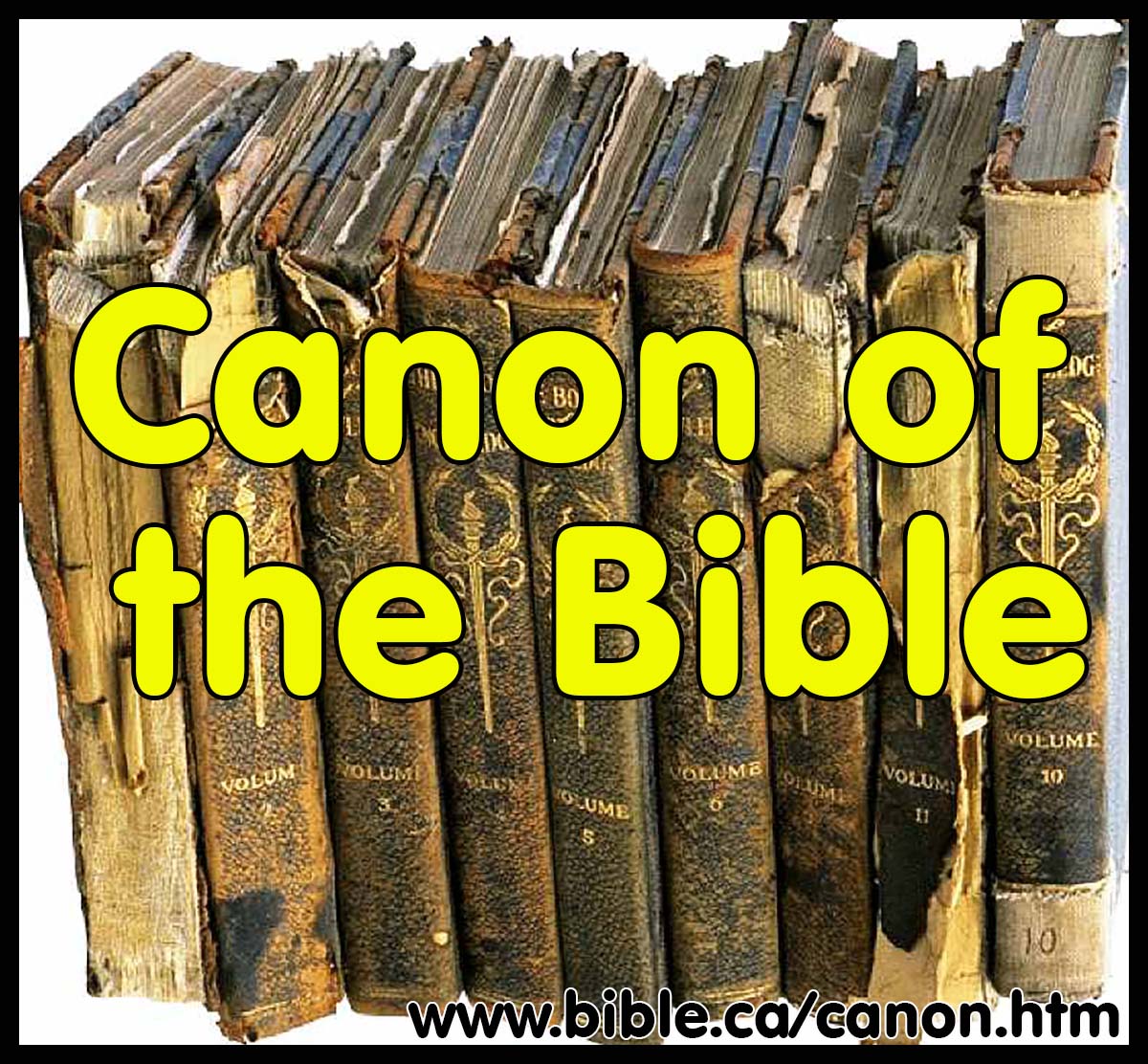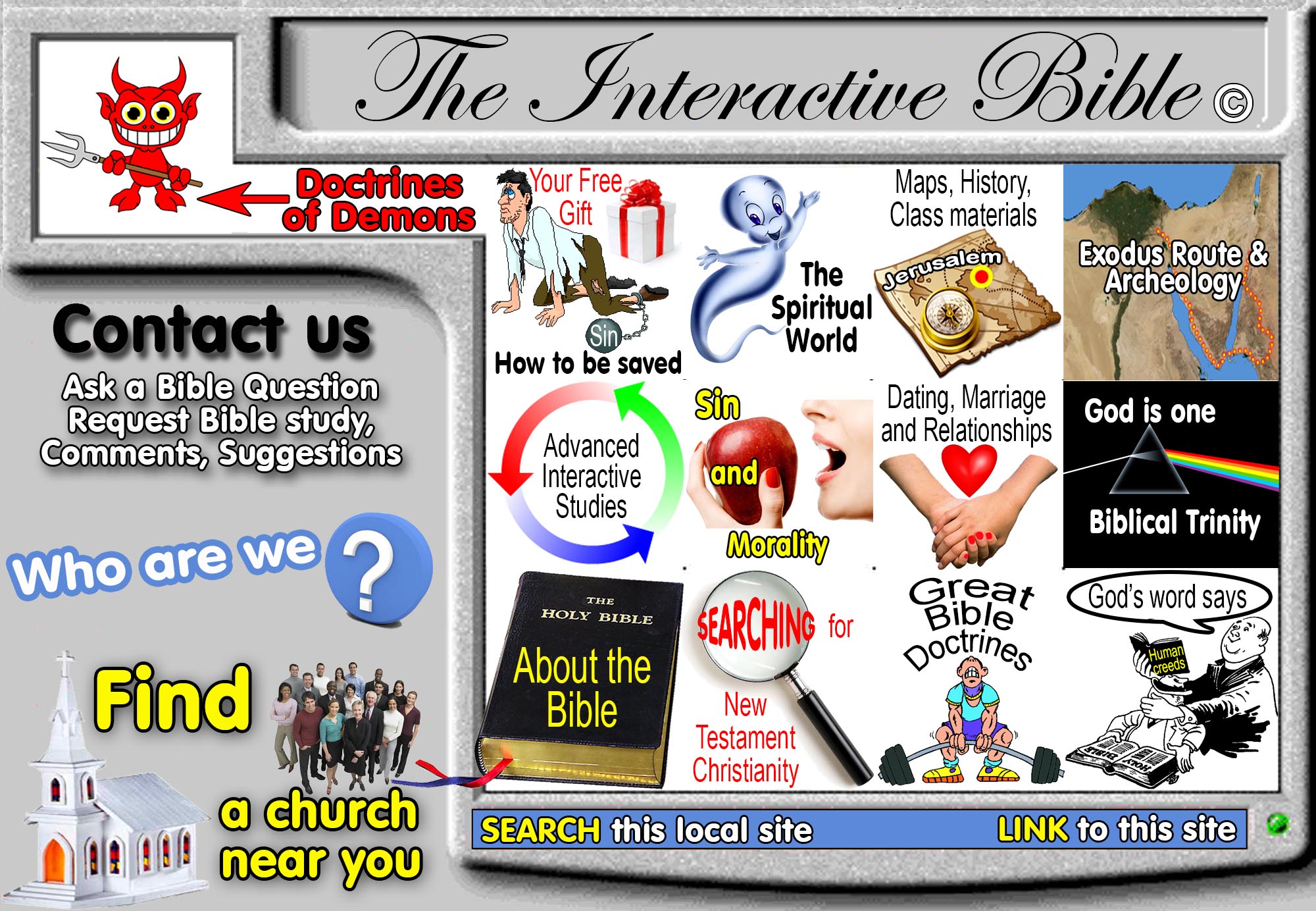|
Acceptance of the "disputed" NT books: Hebrews, 2 Peter, James, 2 John, 3 John, Revelation The majority of New Testament books were universally accepted by about 100 AD, but it appears that a small number of books were "disputed". A conservative, bible believing perspective! |
God's providence gave us the 27 book New Testament Canon, not the church. God, not men decided the canon. This providence does not mean that church leaders were inspired in their selecting the canon, only that God had his eye on the scriptures the whole time and brought about His will to form the Bible we see today!
|
|
Acceptance of the "disputed" NT books: Hebrews, 2 Peter, James, 2 John, 3 John, Revelation. The majority of New Testament books were universally accepted by about 100 AD, but it appears that a small number of books were "disputed". |
Acceptance of the "disputed" NT books: Hebrews, 2 Peter, James, 2 John, 3 John, Revelation.
The majority of New Testament books were universally accepted by about 100 AD, but it appears that a small number of books were "disputed".
Introduction: Disputed books: Hebrews, 2 Peter, James, 2 John, 3 John, Revelation.
- By "disputed", we mean that some geographic regions accepted the book, while others recognized it, but did not view it on the same level as the accepted New Testament books. While some geographic areas had always accepted these books as scripture, others held them at bay, even considering them to be forgeries. The most logical explanation, is that some of these books were originally written to one geographic area and the book did not immediately get distributed to other areas.
- A key point to remember, is that we have fragmentary historical data for the earliest periods. So a lack of historical evidence, does not mean these books are spurious. For example, the Muratorian canon may have included these books, but because the first and last pages of the book are damaged or missing, we cannot know for sure.
- "But this question, like most over which Christians disagree, is not the cutting edge of what Christianity is all about...there was division everywhere in the church on the books that might be called the 'fringe,' but there was very little disagreement over what was at the core of the matter...The division of opinion...was not over the core, but over the 'fringe.'" (The Formation of the Christian Biblical Canon, Lee M. MacDonald, 1995, p 132)
- It is interesting Song of Solomon was never quoted by Philo. This might lead some to conclude that Philo considered Song of Songs to not be inspired. But this is the wrong conclusion. "The Jewish philosopher Philo, who quoted so extensively from the Old Testament, never mentions Song in any of his extant writings. The New Testament contains no direct reference to this book. The book, however, was among the four books of "hymns to God and precepts for the conduct of human life" which were part of the Bible of Josephus." (The wisdom literature and Psalms, J. E. Smith)
- "The Muratorian canon, dating from the end of the second century, lists most of the books in our New Testament, but does not include James, Hebrews, 3 John, or 1 and 2 Peter. In addition to the Revelation of John, it also includes the Apocalypse of Peter. Certain books remained problematic for centuries. Hebrews remained controversial in the West until the end of the fourth century. Revelation remained controversial in the East even after it was generally accepted as canonical. The first extant list of New Testament books that exactly matches our canon is found in the Paschal Letter of St. Athanasius of Alexandria (A.D. 367). In the West, the New Testament canon was not settled until the Council of Carthage in A.D. 397." (THE WAY: What Every Protestant Should Know About the Orthodox Church, Clark Carlton, 1997, p 97)
- The circumstances around each book are different. Here is a discussion on each:
Hebrews:
1. P46, Chester Beatty papyrus, (200 AD) contained the book of Hebrews.
2. "There is no need to use such a document to reconstruct the New Testament when we have manuscripts from the same time period, the close of the second century, that nicely document each collection unit. There is no need to speculate about whether the Letter to the Hebrews was part of a collection of the Letters of Paul in the second century, because a second-century exemplar of the Pauline letter collection, P46, containing the letter at issue, actually exists. Are we not forced by the evidence to interpret the discussion in the early church about the authenticity of certain biblical writings as a reaction to an already published book? From this perspective, the same documented debates that are usually evaluated to demonstrate a gradual growth process of the canon serve instead as proof that the Canonical Edition of the Christian Bible was finished, published, and widely used." (The first edition of the New Testament, David Trobisch, 2000, p 37)
3. Many early Christians viewed Hebrews as a book written by Paul.
4. There is evidence that Hebrews was always included in the collection of Pauline epistles. For example, when Irenaeus, Clement of Alexandria and Origen refer to new Testament books, they all simply refer to "Paul's writings" because everyone knew which ones they were.
2 Peter:
1. The earliest reference by any apostolic writer to 2 Peter, appears to be Origen. (225 AD)
2. "And Peter , on whom the Church of Christ is built, 'against which the gates of hell shall not prevail' (Matt. 16:18), has left one acknowledged Epistle; possibly also a second, but this is disputed." (Origen 6.25.8)
3. Origen was therefore aware of 2 Peter, but stated that some dispute its genuineness.
James:
1. The earliest quote from any apostolic writer appears to be Origen. (225 AD)
a. "the letter bearing the name of James," (Origen, Commentary on Matthew, 17.30)
b. "They thought, then, that He was the son of Joseph and Mary. But some say, basing it on a tradition in the Gospel according to Peter, as it is entitled, or "The Book of James," that the brethren of Jesus were sons of Joseph by a former wife, whom he married before Mary." (Origen, Commentary on Matthew, 2.17)
c. James is quoted by Origen many times in his Commentary on John (19.61)
2. "The Alexandrian Church is the only one which, as far as the sources enable us to determine, can be proved always to have included James in the Canon along with a number of other Catholic Epistles on a basis of equal authority with the rest. In the case of the Churches in Jerusalem and Antioch, this can be shown to be probable." (Introduction To The New Testament, Theodor Zahn, 1909 p 124)
3. Based upon our view that the canon varied slightly in early years based upon geographic distribution, it would seem logical that James was written to the region of the city of Alexandria.
2 John:
1. The Muratorian Canon (200 AD) includes 2 John.
2. Hippolytus (170-235), accepted 2 John as scripture.
3. Did Irenaeus (180 AD) quote from 2 John?
- Grant reports in his book, (The Formation of the New Testament, Robert M. Grant, 1965, p155) that Irenaeus cites 1 John in Against Heresies, 3.16.5 and, three paragraphs later, refers back to the same epistle but quotes from 2 John. He may have regarded I-II John as one letter; perhaps he was quoting from memory.
3 John:
1. Did Polycarp (110 AD) quote 3 Jn?
a. Polycarp is thought to be quoting 3 Jn 1:8 "fellow companions in the truth" (Polycarp, Philippians 10:1)
b. But this seems unlikely as Schaff translates it: "Stand fast, therefore, in these things, and follow the example of the Lord, being firm and unchangeable in the faith, loving the brotherhood, and being attached to one another, joined together in the truth, exhibiting the meekness of the Lord in your intercourse with one another, and despising no one." (Polycarp, Philippians 10:1)
2. It is more likely not a direct quote or allusion.
Revelation:
1. Justin Martyr (150 AD) refers and quotes Revelation 20:
- "And further, there was a certain man with us, whose name was John, one of the apostles of Christ, who prophesied, by a revelation that was made to him, that those who believed in our Christ would dwell a thousand years in Jerusalem; and that thereafter the general, and, in short, the eternal resurrection and judgment of all men would likewise take place." (Justin Martyr, Dialogue 81.4)
2. The Muratorian Canon (200 AD) includes Revelation.
3. Hippolytus (170-235) accepted Revelation as scripture.
By Steve Rudd: Contact the author for comments, input or corrections.

